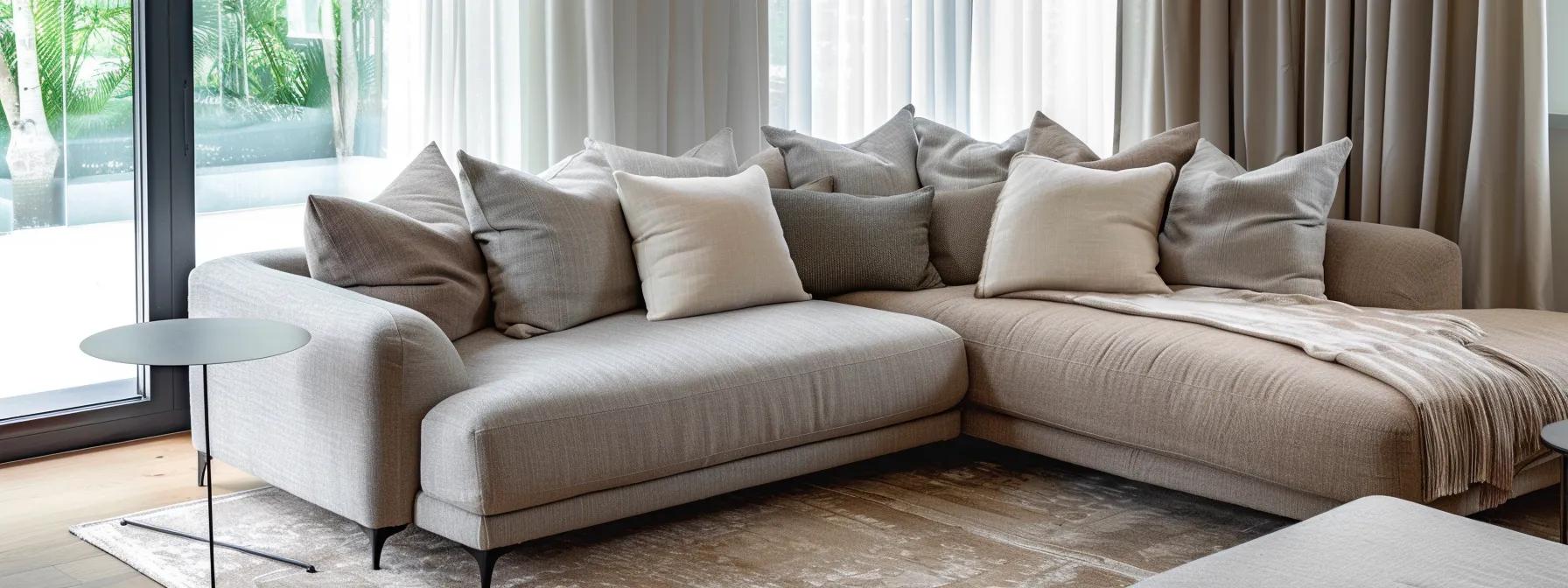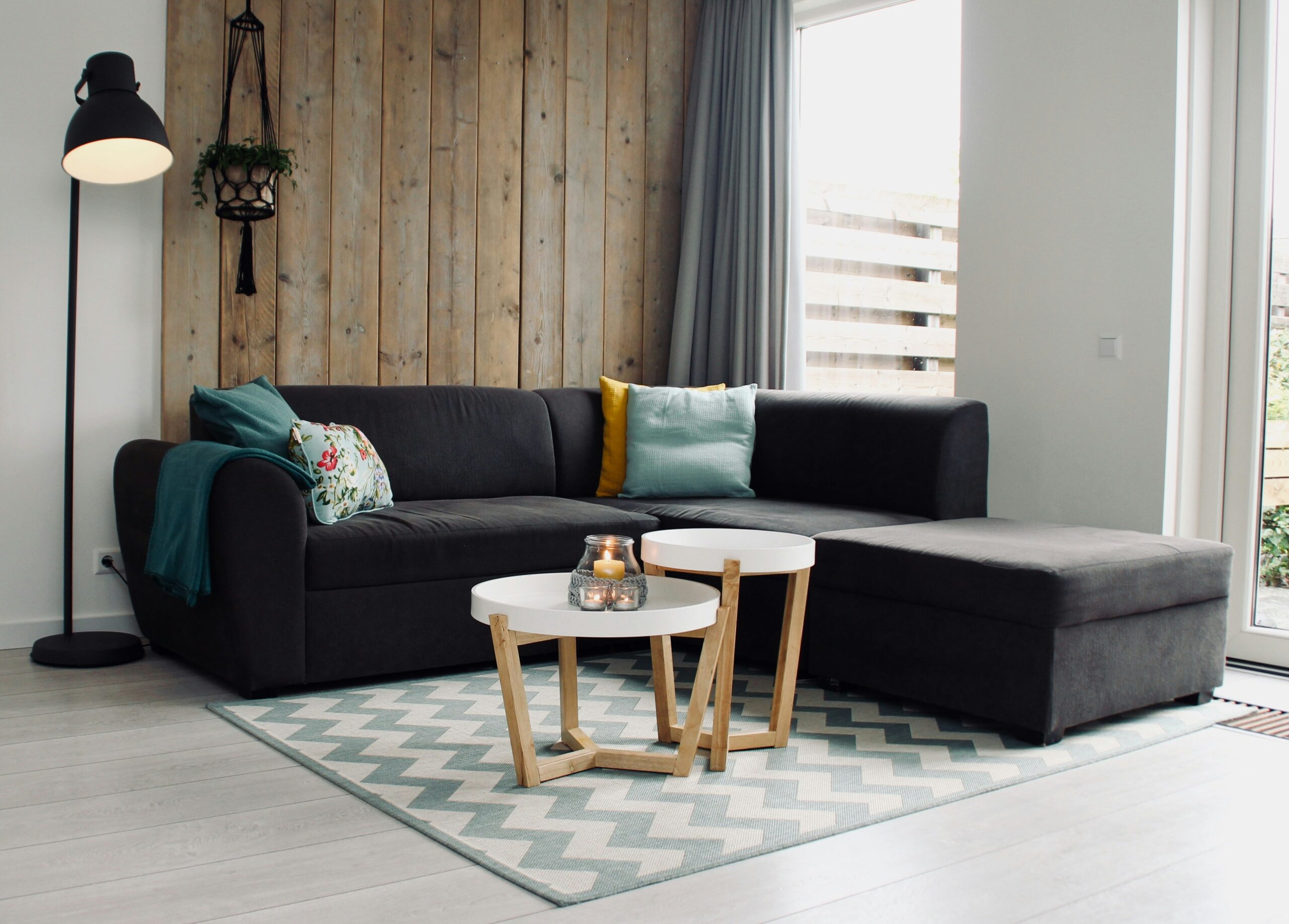What Are the Best Sofa Cleaning Techniques for Different Upholstery Types?
Fabric, leather, velvet and suede sofas each demand distinct cleaning approaches to protect fibres, maintain texture and prevent damage sofa your thinking about sofa maintenance makesure you read this. Understanding upholstery composition ensures that the chosen cleaning agent or tool supports longevity and avoids moisture buildup or colour loss. Selecting the right cleaning process not only preserves aesthetics but also enhances the durability of essential living room furniture. It is important to always check the manufacturer’s guidelines, which can provide tailored advice for each specific type of material found in your couch.
Additional care tips include the use of microfiber cloths that are gentle on surfaces and environmentally friendly cleaning agents that do not leave abrasive residues. Such attention to detail helps maintain not just a clean sofa, but one that remains a focal point in your interior design scheme. Ensuring that every cleaning step—from pre-treatment to drying—is performed correctly will ultimately sustain the sofa’s original charm and comfort.
How Do You Clean a Fabric Sofa Safely and Effectively?
Cleaning a fabric couch begins with regular vacuuming to remove debris, dust and allergens, then spot-treating using a mild detergent solution to break down dirt without leaving residue. Proper cleaning reduces the risk of stains setting into the fibres and ensures that allergens like pollen and pet dander are removed. It is important to use a lamp or soft light to check for any hidden spots where dirt may have accumulated.
- Vacuum using a soft-brush attachment to lift lint and dust.
- Mix a teaspoon of detergent in 500 ml of warm water and test on an inconspicuous area.
- Blot stains with a microfiber cloth soaked in the solution, never rub.
- Rinse with plain water on a clean cloth and allow air-dry away from direct sunlight.
Ensuring that you always act gently when treating your fabric sofa will help maintain the integrity of the fibres and avoid any unintentional damage. Over time, these routine practices not only keep the sofa visually appealing but also contribute to a healthier living room environment by reducing the accumulation of dust and allergens.
Fabric Sofa Cleaning Techniques
Regular vacuuming is a fundamental step in maintaining fabric sofas, effectively removing dust, debris, and allergens that accumulate over time. Spot-treating stains with a mild detergent solution helps to break down dirt without leaving residue, which is crucial for preserving the fabric’s integrity. Gentle cleaning methods prevent fiber matting and reduce bacteria buildup, setting the stage for deeper cleaning methods like steam cleaning.
Smith, J., Upholstery Cleaning Guide (2022)
Gentle cleaning prevents fibre matting and reduces bacteria build-up, setting the stage for deeper methods such as steam cleaning. By integrating regular upkeep routines into your household schedule, you help ensure that incidental spills or minor stains do not develop into persistent issues that could affect the overall appearance of your living room.

What Is the Proper Way to Clean a Leather Sofa?
Maintaining leather upholstery involves removing surface dirt with a dry cloth, conditioning the hide to prevent cracks and using a pH-balanced cleaner for stubborn marks. Leather, as a natural material, can age gracefully if cared for properly; however, the wrong cleaning method might cause irreversible damage. It is paramount to use products designed specifically for leather care to avoid stripping the natural oils that keep it supple.
- Dust with a dry microfiber cloth to clear debris.
- Wipe with a leather cleaner or a mixture of vinegar and distilled water (1:1).
- Condition using a leather-specific balm to restore moisture and flexibility.
- Buff gently with a soft cloth for an even finish.
Taking additional time to perform routine conditioning every few months will help prevent the leather from drying out or cracking, especially in environments where exposure to sunlight is frequent. Regular treatment not only helps to maintain the aesthetic appeal of your couch but also reinforces its protective layer, prolonging the life of your treasured piece of furniture.
Leather Sofa Maintenance
Maintaining leather upholstery involves removing surface dirt with a dry cloth and conditioning the hide to prevent cracks. Using a pH-balanced cleaner for stubborn marks is essential to avoid damaging the leather. Routine conditioning upholds leather’s suppleness, which prevents wear and tear from daily use.
Johnson, A., Leather Care Handbook (2021)
Routine conditioning upholds leather’s suppleness, which prevents wear and tear from daily use. By embracing a dedicated care regimen, you ensure that your leather sofa remains both visually striking and comfortable to use for many years.
How Should You Clean Velvet and Suede Sofas?
Velvet and suede require low-moisture and soft-bristled tools to preserve pile and nap without water stains. These materials are particularly delicate, and even a small amount of liquid can result in water spots or discoloration. It is therefore essential to apply cleaning agents sparingly and follow up with a light brush to restore the texture.
- Vacuum with a brush attachment to lift dust.
- For velvet, mist lightly with a steam cleaner and brush in the direction of the pile.
- For suede, use a suede brush to remove scuffs and a dry-spot eraser for stains.
Because these fabrics tend to attract more dust and debris, frequent gentle cleaning is advisable. Avoid heavy cleaning techniques that utilize excessive moisture, as this could lead to noticeable patterns or marks on your sofa. Instead, focus on using specialized tools and methods that align with the fabric’s unique characteristics while preserving its rich, tactile appearance.
Taking extra care when cleaning these types of fabrics not only maintains their luxurious look but also helps prevent potential damage from everyday use. Incorporating these methods into your regular cleaning schedule ensures that your velvet or suede sofa continues to provide both comfort and a sense of elegance to your living room environment.
When and How to Use Steam Cleaning on Your Sofa?
Steam cleaning uses high-temperature vapor to sanitize and deep-clean upholstery, eliminating bacteria, allergens and embedded dirt without harsh chemicals. This method is particularly effective for reaching deep into the fibres and ensuring that all traces of grime and contaminants are removed. It is important, however, to confirm that your sofa’s material is compatible with steam cleaning to avoid any unintended water damage or shrinkage.
- Confirm upholstery is steam-safe (check manufacturer tag).
- Pre-vacuum to remove loose debris.
- Work in sections, keeping the nozzle 10 cm away to avoid soaking.
- Finish with a dry microfiber pad to absorb moisture.
When using steam cleaning, ensuring that you maintain the correct distance and avoid over-wetting the fabric is critical. This method not only revitalizes the sofa but also helps to diminish any lingering odors that may affect the overall ambience of your room. The high temperature of the steam effectively kills bacteria and allergens, making it a highly recommended practice for households with pets or individuals with allergies.
In addition to regular deep-cleaning sessions, occasional steam cleaning can be combined with protective sprays like Scotchgard to create an extra layer of defense against spills and stains. This dual approach maximizes the longevity of your sofa while keeping it both fresh and hygienic.
How Can You Remove Common Sofa Stains Like Coffee, Wine, and Ink?
Spills on upholstery demand swift, targeted action using accessible ingredients or specialist stain removers to prevent permanent marks and odours. Timely intervention is key; the longer a stain sits untreated, the more difficult it becomes to remove. Common spills, especially in busy households or entertaining spaces, often include substances known for their pigment intensity and chemical composition, such as red wine and coffee, which can create persistent blemishes if not properly addressed.

What Are the Step-by-Step Methods to Remove Coffee and Wine Stains?
Immediate blotting and neutralizing agents halt stain penetration, while gentle detergents lift pigments without fading. Acting quickly on spills is essential to stop the stain from setting into the fabric. The process involves a series of careful actions that work together to restore your sofa’s appearance without causing additional harm.
- Blot excess liquid with an absorbent towel.
- For coffee, apply a mix of mild laundry detergent and water.
- For red wine, sprinkle salt to absorb, then treat with a 1:1 white vinegar and water solution.
- Rinse with plain water, blot dry and allow to air-dry.
This approach curtails moisture and colour residue, restoring upholstery appearance effectively. It is beneficial to repeat the process if traces of the stain remain, always making sure that the fabric is not overly saturated. Following up with a light brushing of the area can also help blend the treated section with the surrounding fabric, ensuring a uniformly clean look.
By incorporating these steps immediately after a spill, you significantly increase the chances of removing even stubborn stains. Maintaining a small cleaning kit with the necessary supplies nearby can be extremely useful, especially in households where accidents are more likely to occur.
Which DIY Stain Removal Solutions Work Best for Sofas?
Household ingredients like baking soda, white vinegar and hydrogen peroxide tackle various stains safely and effectively when used correctly. Each of these common products offers unique properties that aid in breaking down the components of difficult stains:
- Baking soda deodorizes and lifts grease when left on stains for 15 minutes, serving as a gentle abrasive that does not damage fabric.
- Vinegar solution dissolves tannins in wine and tea, ensuring that even the stubborn components of a stain are addressed.
- A hydrogen peroxide spot-test can reduce ink marks on light fabrics, though it is important to test on a hidden area to avoid any unintended discoloration.
Simple DIY formulas often outperform harsh solvents and support environmentally friendly upkeep. These solutions leverage everyday items to clean effectively without introducing toxic chemicals into your home. Combining these methods with routine cleaning practices not only preserves your upholstery but also contributes to a safer, greener living environment.
Sofa Stain Removal Solutions
Immediate blotting and neutralizing agents halt stain penetration, while gentle detergents lift pigments without fading. Household ingredients like baking soda, white vinegar, and hydrogen peroxide tackle various stains safely. Simple DIY formulas often outperform harsh solvents and support environmentally friendly upkeep.
Brown, C., Stain Removal Techniques for Upholstery (2023)
What Are the Best Stain Removers Available in the UK Market?
A selection of UK-approved upholstery cleaners deliver plant-based, low-VOC formulations that balance stain removal with textile safety. These products are specifically formulated to be tough on stains while remaining gentle on delicate fabrics, making them ideal for frequent use in households concerned with both performance and environmental impact.
Product Suitable Upholstery Key Ingredient Eco Rating Vanish Upholstery Fabric, Polyester Sodium percarbonate ★★★★☆ Dr Beckmann Eco Cotton, Linen Bio-enzymes ★★★★★ Oust Premium Leather Leather pH-balanced surfactant ★★★★☆
High-performance stain removers preserve fabric integrity and align with allergen-safe cleaning. Their advanced formulas ensure that even the toughest stains, from red wine spills to accidental ink blots, are removed without compromising the colour or texture of your couch.
Concluding, maintaining your sofa through regular cleaning routines and prompt stain treatment not only keeps it visually appealing but also contributes to a healthier living space. Combining traditional methods with modern cleaning products ensures that your investment continues to provide comfort and style, making your living room a welcoming refuge for family and guests alike.




